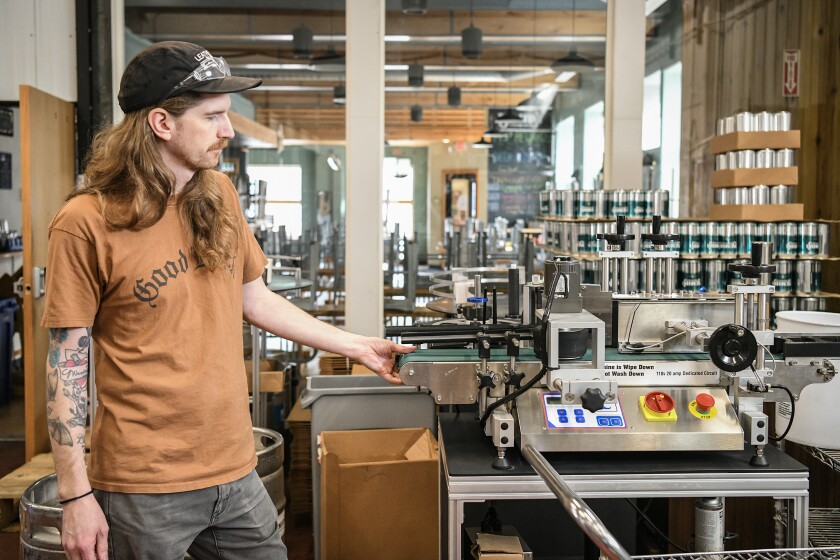Editor's note: This story was initially published in the Pioneer's Summer 2025 edition of inBemidji Magazine. To see the full issue,
Tom Hill had been thinking about opening a craft brewery for several years before Bemidji Brewing Company launched in 2012. Craft brewing was taking off in Minnesota when Tom and Megan Hill and Justin and Tina Kaney formed an LLC and started a nanobrewery at Harmony Food Co-op at 117 Third Street NW.
ADVERTISEMENT
Tom and Justin (Bud) had met at Bemidji State University in the model design program. Tom’s father was a winemaker, so he was familiar with home fermentation and had done some home brewing. It was natural that he would introduce Bud to the process.
Fast-forward a few years, during which both of them pursued different career paths and lived in different parts of the country. Tom’s interest in brewing grew to be both a passion and a science. When he worked in Austin, Texas, he continued to brew as a hobby. Craft beers were just taking off there.
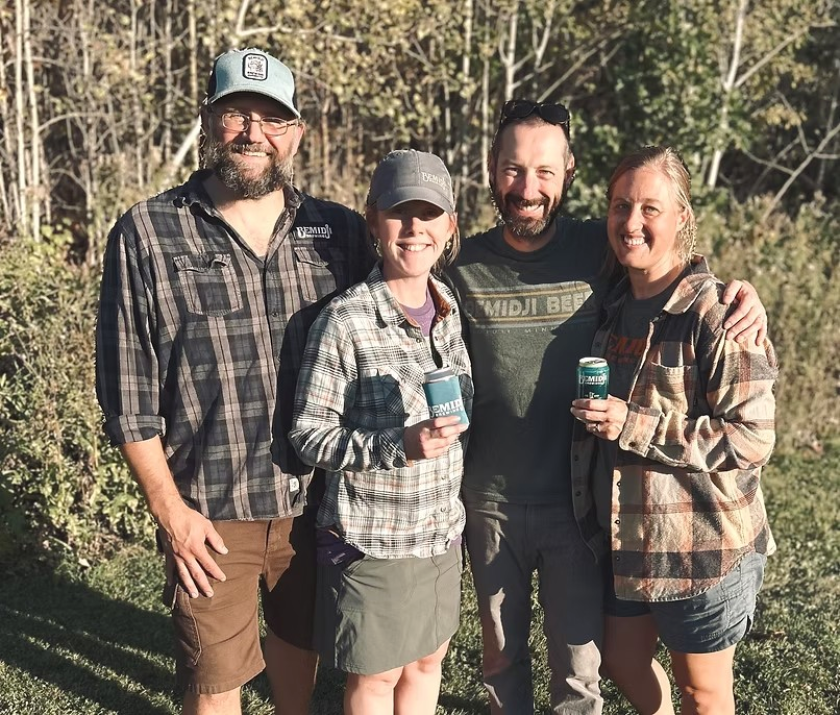
Eventually, he moved to the Twin Cities, closer to Minnesota’s budding craft brewing community. In 2008, he studied brewing at Siebel Institute of Technology in Chicago, the oldest brewing school in the nation. His desire to start a brewery continued to grow.
Bud graduated from BSU and moved to Rhode Island to work for Hasbro Toy Company. While there, he did a little home brewing with some friends, but it wasn’t something he was thinking about doing for a living. He spent a year working with AmeriCorps in Missoula, Montana, while Tina worked for the Montana Natural History Center. The Kaneys noticed that Montana was light years ahead of other states when it came to craft brewing.
Tom and Bud stayed in touch. Eventually, Tom says, “He and I decided to pursue opening a brewery.”
Realizing their vision
Bud and Tina are from Wisconsin, while Tom and Megan grew up in Hibbing. They chose Bemidji because they liked the community, its size and the outdoors. Tom and Bud welcomed the opportunity to return to Bemidji as community members rather than students.
“Also,” says Tom, “the name is unique. There’s no other Bemidji anywhere else.” (Shortened from the Ojibwe name for the lake, Bemidjigemaag means “water flowing crosswise,” as the Mississippi angles through Lake Bemidji.)
ADVERTISEMENT
They used Kickstarter to fund a five-gallon system they started out with at Harmony Foods.
“We needed to prove to our lenders that we were doing this for real,” says Tina.
New laws governing craft breweries opened up possibilities. In 2011, the Surly bill had passed, creating a liquor license that allows craft breweries to sell pints of beer onsite, paving the way for brewer taprooms. Previously, small breweries could not produce more than 3,500 barrels per year and could not distribute to liquor stores.
The Bemidji Brewing team knew they wanted a taproom and moved into a 2,000-square-foot space on the northwest corner of Fourth Street and Beltrami Avenue.
“The new owners had put in new windows, HVAC, etc., so we were lucky to get it,” Megan said.
The two couples went to work chiseling off old carpet to expose the terrazzo floor below. They invested in a cooler and managed with minimal other equipment.
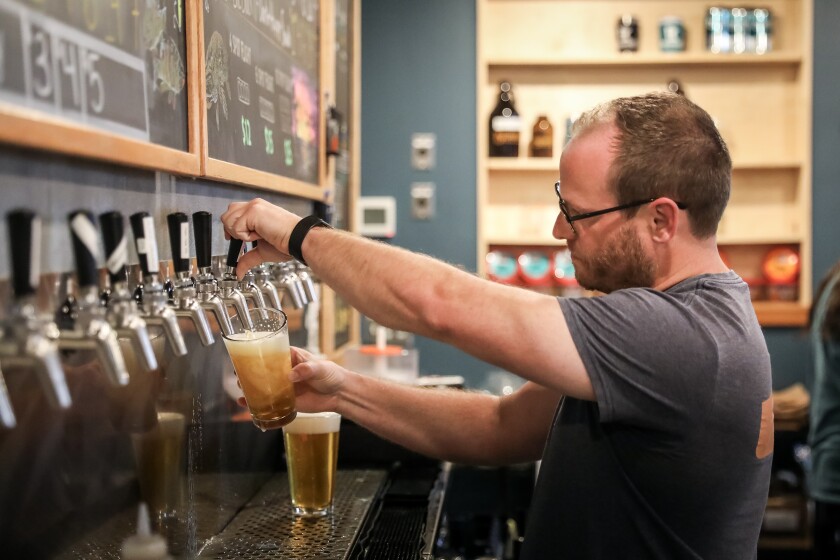
“The furnishings involved a lot of elbow grease. We made our bars and tables,” Megan added.
ADVERTISEMENT
They outsourced electrical and plumbing needs, upsized to a three-barrel brewing system, and in July 2013, opened the taproom at 401 Beltrami Avenue.
“In the beginning, everyone involved did basically everything,” Tom explained, “but today, Bud focuses on business strategy and outreach, talking to financiers, bankers, etc.”
Tom’s focus has been on production/brewing. Two brewers, Chris Marty and Matt Magnuson, have been part of the Bemidji Brewing crew for 10 years.
Megan, the director of external operations, deals with sales and distribution and works with human resources.
Tina is in charge of business operations — handling accounting, insurance and coordinating community outreach like Pint Nights.
Tom says folks in Bemidji were supportive from the start, “We received a warm reception from the community — very welcoming.”
Building a brewery
The taproom on Beltrami Avenue quickly became a popular gathering place, and the location, just a block west of Lake Bemidji, brought in a lot of passersby.
ADVERTISEMENT
“It was a surprise to us that our community was built so quickly,” Megan recalled. “Friendships flourish in relationships we and our staff have made with people. That was a wonderful surprise.”
From that taproom, Bemidji Brewing launched its distribution to local vendors. They started delivering to three downtown bars: Brigid’s Pub was first, then Keg & Cork and Tutto Bene — all conveniently just down the street, so deliveries were made via hand cart.
The goal was to expand to a 15-barrel system. Just three years later, when a building on America Avenue became available, they up-sized from 2,000 to 5,000 square feet.
The building had previously housed a small engine implement dealership and then cold storage used by Cenex. Zetah Construction completed the major work and installed repurposed glass panels that had been removed from the mall. The panels became a dynamic see-through wall between the taproom and the brewhouse. Again, the brewery crew built their own tables, did the woodwork and painted.
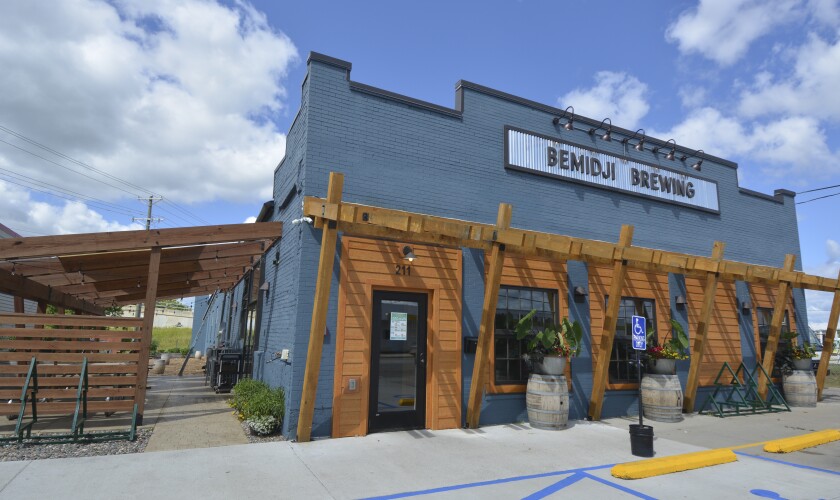
Brewing began at the new site about three months before opening the taproom, which opened just three weeks after the first one shut down.
The new location is farther from the lake, but craft beer aficionados tend to seek out breweries, and there are popular neighbors: Downtown Meats right next door, Harmony Co-op just two blocks away, Bemidji Woolen Mills and Grandma’s Attic close by.
The tap room has ample seating — indoors and outside — and offers Giovanni pizzas. An on-site parking space specifically for food trucks brings in a variety of foods throughout the summer months.
ADVERTISEMENT
“I feel like we’ve been part of a regeneration of this corner of downtown,” Megan said.
The brewing process
By mid-March, Bemidji Brewing Company had already brewed 60 barrels (500 gallons) of their seasonal favorite Summer IPA. Early sales orders look good and indicate that craft beer-lovers and “hopheads” are ready for summer.
Starting out as a tap tender, Matt eventually moved into brewing and production. Matt says the goal is to have one season’s beer run out with a week to a month overlap on the seasonal brews — close to when the next season starts.
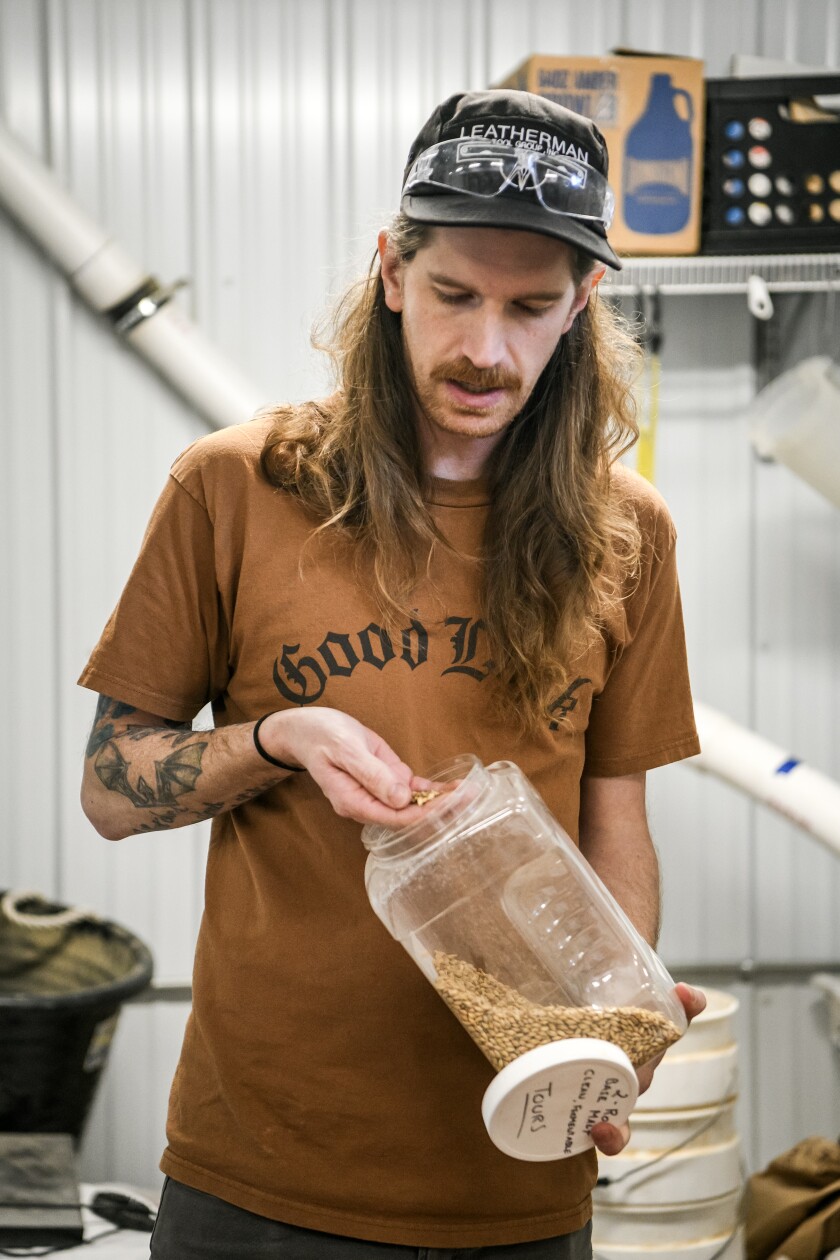
The winter season ran from December through February, featuring a new brew: a dark lager called Ice Box. Now it’s summer’s turn.
Beer ingredients include yeast, malt, hops and grains. Raw materials come from as far away as the Pacific Northwest, Europe and even New Zealand. Most are purchased through Maltwerks of Detroit Lakes, a malthouse that sources high-quality grains.
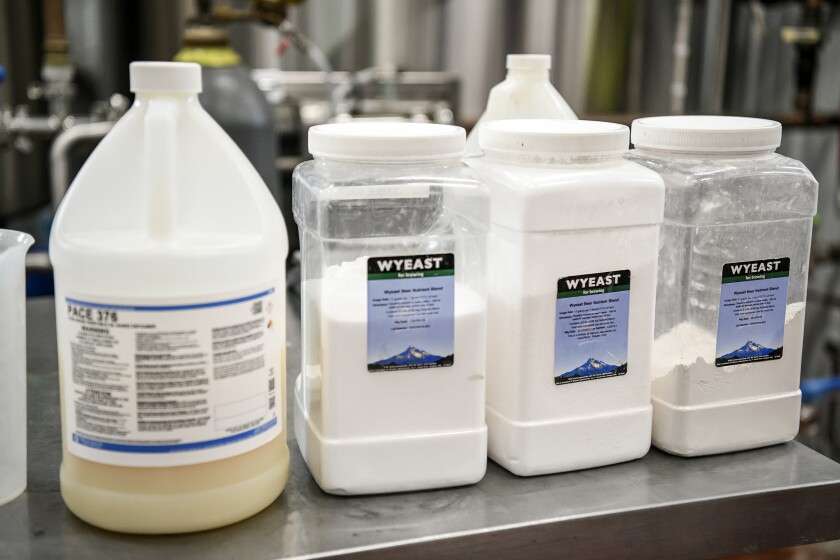
Bemidji Brewing uses mostly barley but other grains as well (wheat, oats, corn and rice). Matt points out varieties of barley in the mill, including malted barley with more starches and sugars. There are also specialty malts and roasted grains for brewing stouts and porters.
Brewing starts with an idea, then the crafting of a recipe, analyzing costs, checking out the sources of ingredients and brewing samples to evaluate — a single batch for the tap room first. Then, re-checking the numbers to make sure they’re correct and taste testing the brew. If it succeeds in the taproom, it might become a seasonal or year-round regular.
ADVERTISEMENT
The taproom is the brewer’s playground. The brewery introduces one or two new beers each year.
The brewing process begins with the grinding of grain at the brewery’s on-site mill. Then the freshly-ground grain goes to the first tank. One batch (15 barrels) will use somewhere between 750 and 1,100 pounds of grain. German Blonde, the brewery’s top seller, uses about 825 pounds per batch.
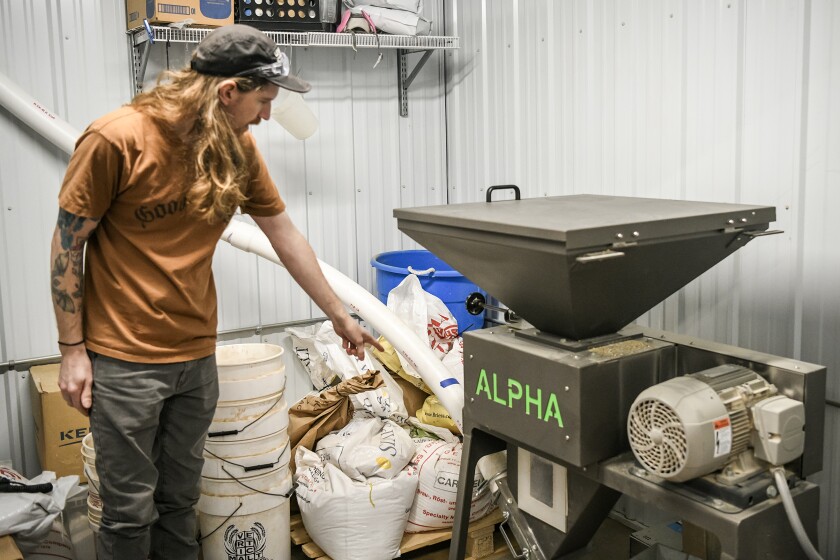
As the head brewer, Chris pumps the grain into the first stainless steel tank to start the second batch of the day.
A slide gate lets the grain fall into the tank where it is mixed with hot water, somewhere between 148 and 158 degrees. Lower temps produce simple sugars and brews that are drier and more fermentable. Higher temps are required for longer sugars, which the yeasts can’t ferment as well, producing more full-bodied beers.
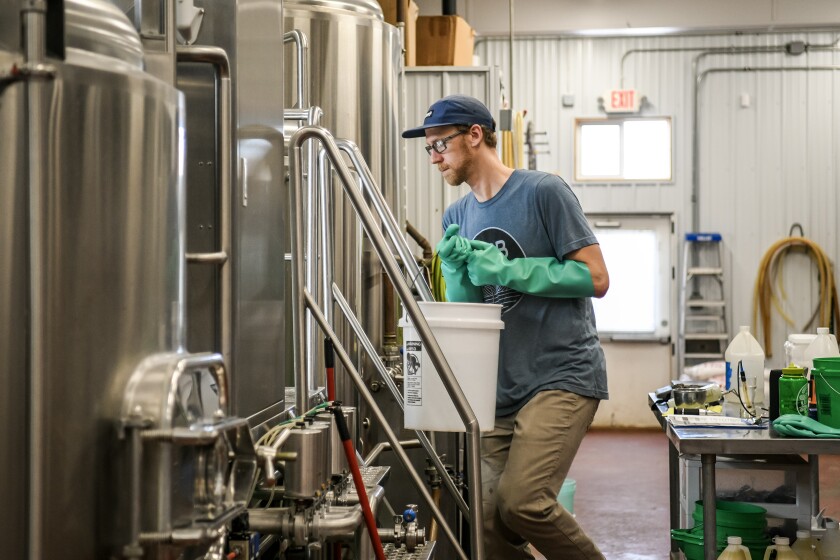
The left (south) side of the brew house is called the “hot side” because of the boiling that happens there. The hot water and grain mixture makes a “mash,” which activates the enzymes in the kernels of barley and breaks down the sugars.

The mash remains in the first tank for about an hour — the first stage of the brew; then it is transferred to a second tank, and the first tank is rinsed and sterilized.
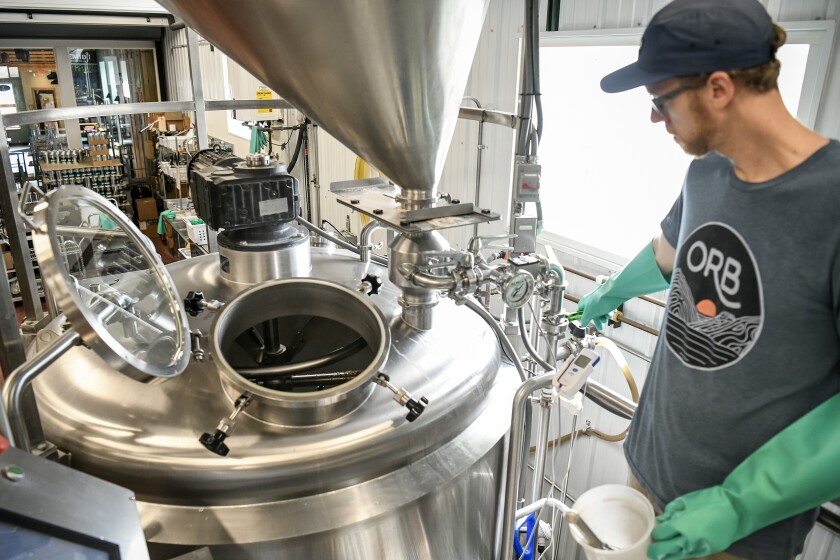
The second tank has a steam jacket. The brew remains in this tank for about 90 minutes for a boil, producing sugary water. After boiling, hops are added for flavor.
The temperature of the brew and the timing of the addition of hops affect the flavor and determine how they’ll express themselves in the beer.
Adding the hops earlier in the process bitters the beer and gives it a longer shelf life. Adding the hops later in the process adds more flavor and aroma. In a batch of German Blonde, 11½ pounds of hops are used.
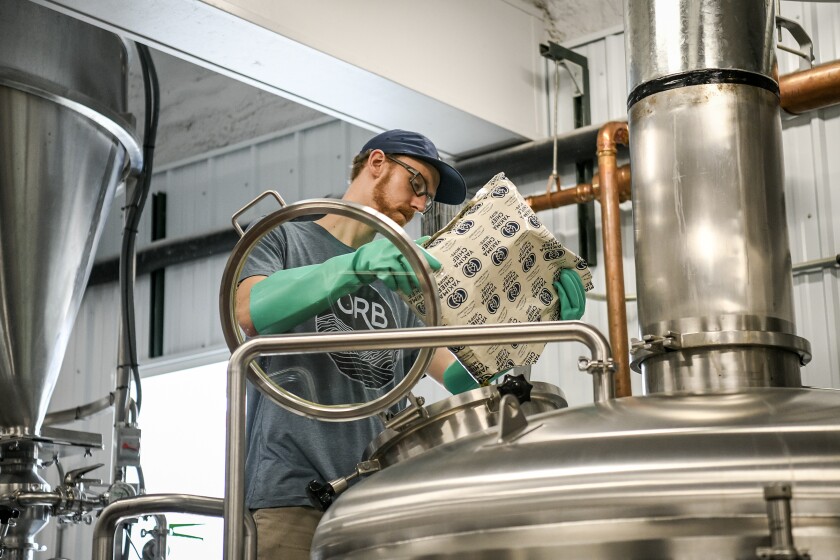
A “whirlpool” at the bottom of the tank collects solids — hops and proteins — in the center. The brew rests for about 15 minutes and is then pumped through the heat exchange, where hot water moves in one direction and cold water runs through another pipe in the opposite direction to cool down the beer after boiling. Removing the heat takes about 35 minutes.
Once the prescribed temperature is reached, the brew is pumped to the opposite side (the “cold side”) of the brew house into the fermenting tanks, where yeast is added. Ales are fruitier brews and ferment at a higher temperature (62 degrees); lagers ferment at cooler temps (48 degrees). The brew will ferment for about two weeks.
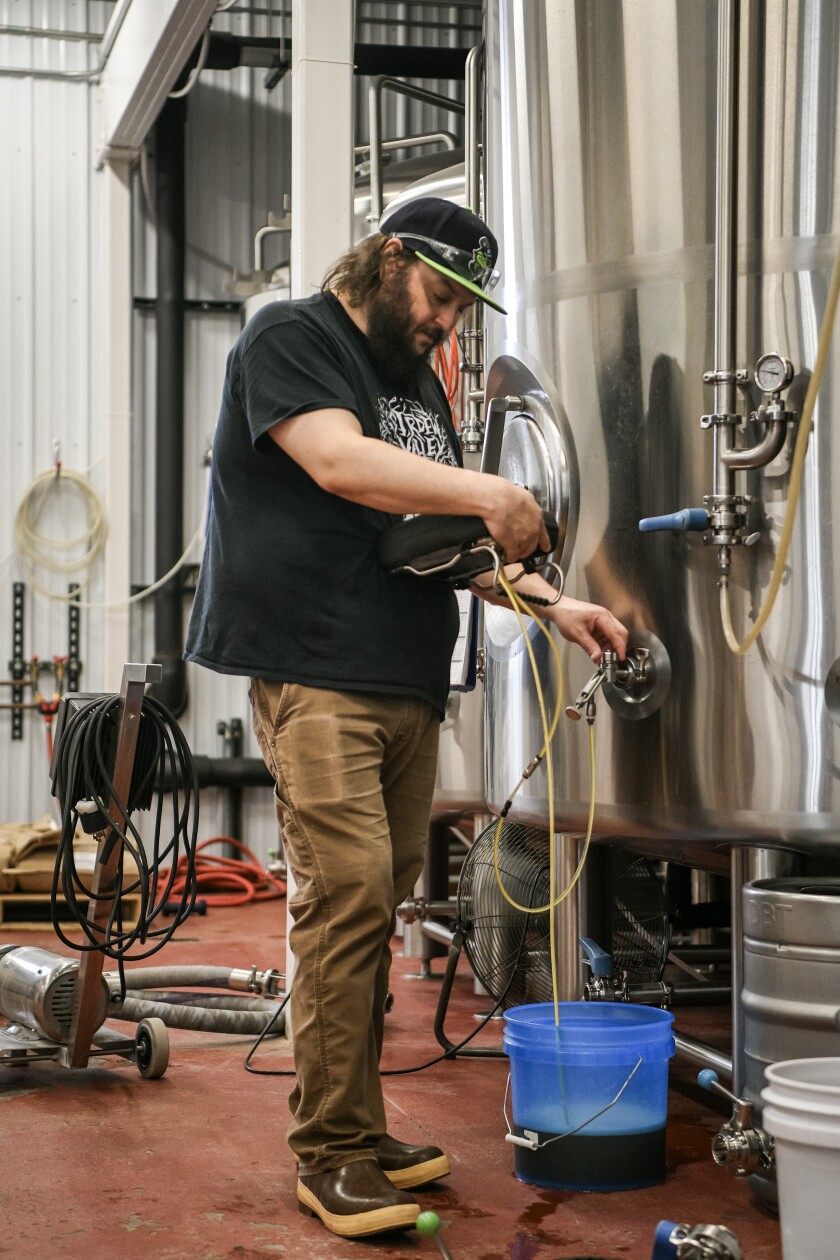
Finally, the brew is transferred to a bright tank to become clear and carbonated.
“We add oxygen to the beer to make the yeast happy," Matt explains.
In the bright tank, the yeast collects in the tank’s cone-shaped bottom. Dead yeast cells sink to the very bottom of the cone and are drained off and discarded. Healthy yeast can be reused in a new batch.
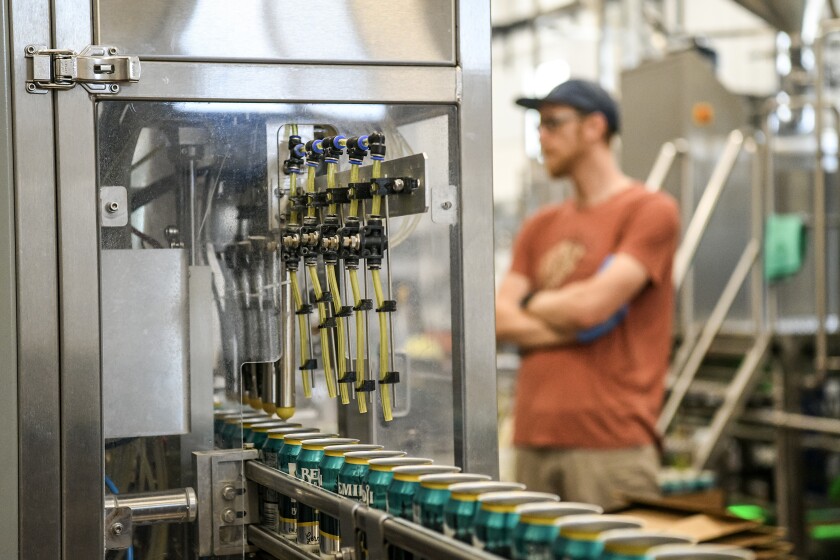
Once the process is complete, the beer is packaged (canned or kegged) for sale. Almost every drinking establishment in the Bemidji area stocks German Blonde from Bemidji Brewing, which accounts for 40 to 45% of the company’s sales, but their Summer IPA and Blood Orange IPA are perennial favorites.
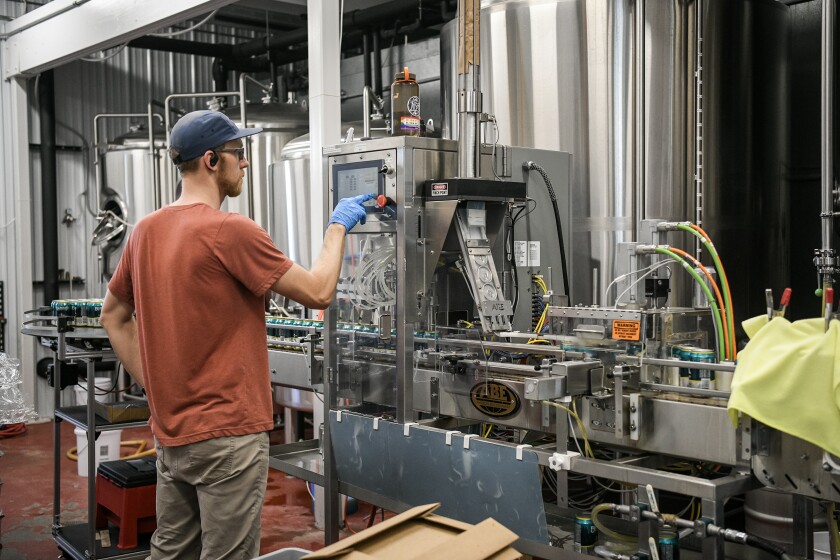
A popular place
While summer months are the busiest in the taproom, Bemidji Brewing hosts a number of events year-round, from storytelling slams to Community Pint Nights to Oktoberfest celebrations and more. They also host beer festivals and serve at summer events like Mississippi Music at the Bemidji Waterfront, the Lake Bemidji Dragon Boat Festival and the Park Rapids' 2nd Street Stage.
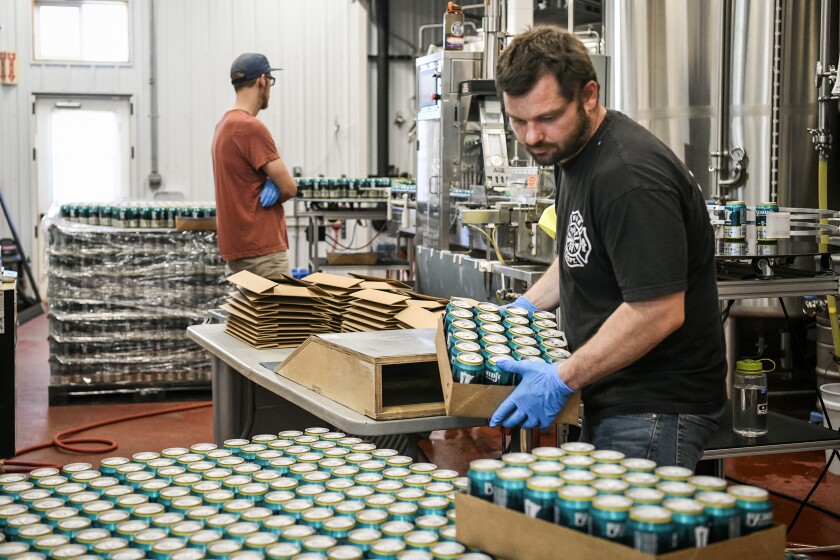
The current site’s 15-barrel system has tanks of different sizes to allow for flexibility in brewing and experimenting with new brews while keeping up with orders, growing in volume and expanding geographically.
Sales staff and brand ambassadors promote Bemidji Brewing products in other communities through tastings and taproom takeovers.
Today, the distribution of Bemidji Brewing products extends across the northern half of Minnesota from Duluth to Fargo/Moorhead and from the Brainerd lakes area to the Canadian border. German Blonde, their signature brew, accounts for 40 to 45% of their sales and is sold on tap in almost every drinking establishment in Bemidji.
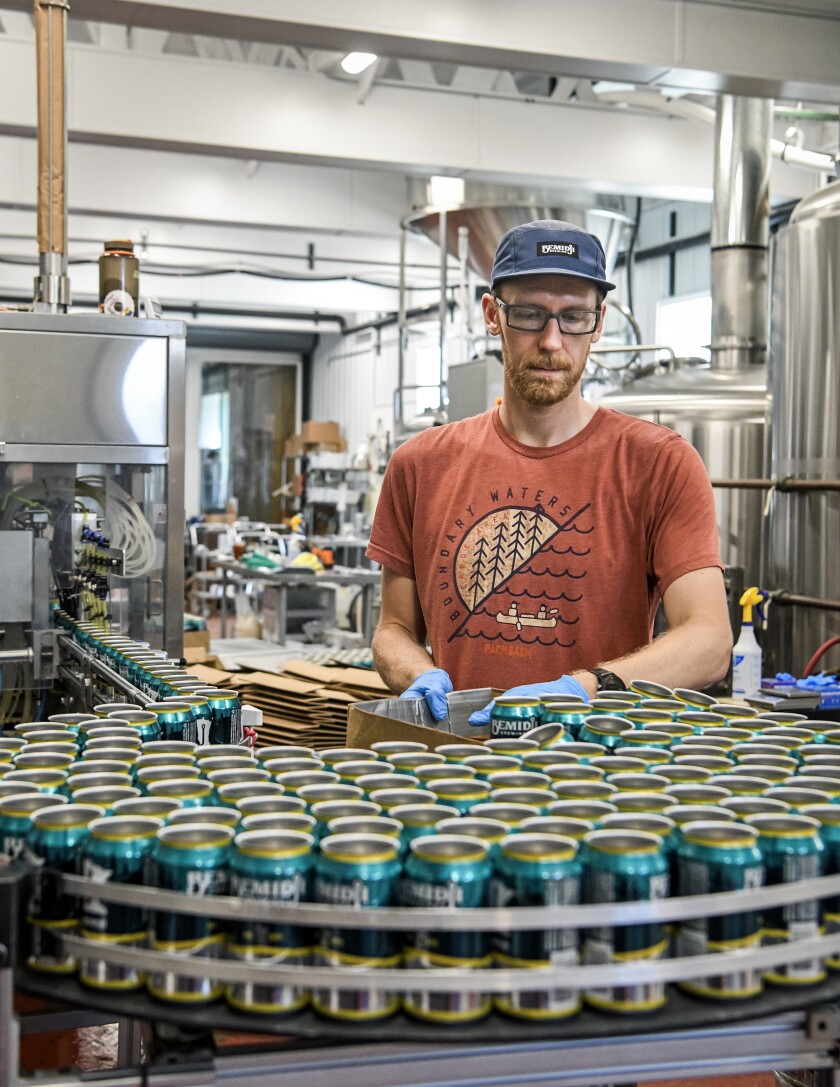
When Bemidji Brewing opened, it was the 25th or 26th craft brewery in the state. Today, with over a decade of growth and success, Bemidji Brewing is one of 234 craft breweries in Minnesota (according to the 2024 listing by the Brewers Association).
With a finger on the pulse of the growth of downtown Bemidji, the Hills and Kaneys hope for continued growth for their company.
